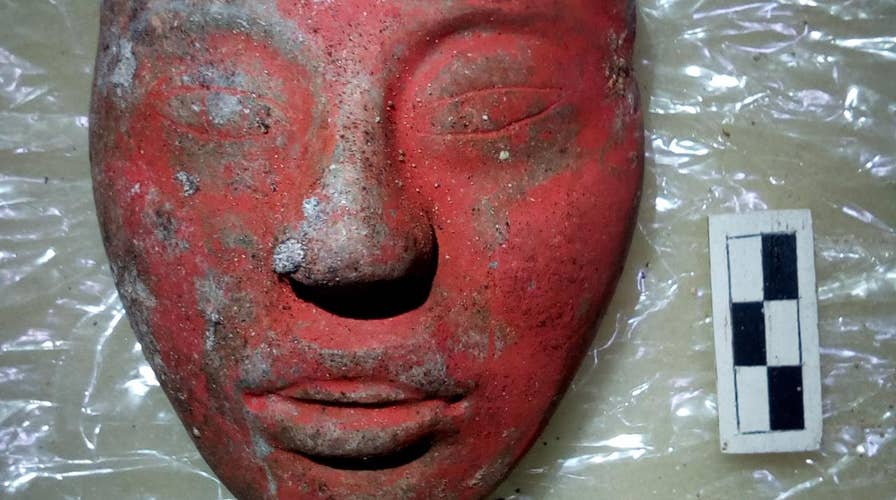Historic Maya City findings in Guatemala
Archaeologists find the oldest royal tomb in the classic Maya City of Waka’ in northern Guatemala
Archaeologists in northwestern Guatemala have uncovered the tomb of a Mayan king that appears to date back to 300-350 A.D.
The royal tomb, the oldest of seven discovered in the ancient city of El Perú-Waka’, is thought to contain the remains of King Te’ Chan Ahk, the Wak Dynasty monarch who ruled in the early 4th century. Historians believe the dynasty was established in the 2nd century.
Though no inscribed artifacts were found that would positively identify the king, archaeologists said the presence of a jade portrait mask with a forehead hair tab of the Maize God indicates that the man in the tomb was a king. Mayan kings were regularly portrayed as Maize God impersonators, according to the Source, the information website of Washington University in St. Louis.
ROMAN SWORDS UNEARTHED AT ANCIENT CAVALRY BARRACKS NEAR HADRIAN'S WALL
“The Classic Maya revered their divine rulers and treated them as living souls after death,” said David Freidel, an anthropology professor at the university and research co-director of the U.S.-Guatemalan El Perú-Waka’ Archaeological Project, which uncovered the tomb.
“This king’s tomb helped to make the royal palace acropolis holy ground, a place of majesty, early in the history of the Wak — centipede — dynasty,” he told the Source.
“It’s like the ancient Saxon kings England buried in Old Minster, the original church underneath Winchester Cathedral.”
El Perú-Waka’, located 40 miles west of the Mayan site of Tikal near the San Pedro Martir River, once commanded major trade routes running north to south and east to west.
Among the artifacts found in the tomb were 22 ceramic vessels, Spondylus shells, jade ornaments and a shell pendant carved as a crocodile.

